Serenity,
Thank you for developing this site. It motivated me to purchase the Intelligent Investor, which I’m about half way through reading. So far it has opened my eyes to the emotional mistakes I’ve made in the past. I’m a bit puzzled with the rating system and I was hoping you could briefly elaborate on what/how a stocks rating changes.
For example, a few weeks ago this site showed Molson Coors Brewing Co (TAP) was being rated as a defensive stock, which Graham states is a stock one can buy and hold long term without much worry (my words, not his but I believe that was his premise).
Today when I looked at your site I noticed TAP was not on the defensive list. I checked you screener and now TAP is rated Do Not Buy. My question is can a change in one of the seven defensive criteria knock a stock all the way down from the top rating (defensive) to the bottom (Do not buy)?
With TAP it appears the liabilities and debt criteria changed. I was thinking that a stock would progress down from defensive to enterprising to NCAV. I’m just trying to understand why the Graham rating would change so dramatically and how that may signal if one should sell a defensive stock. Thank you for taking the time to consider my question.
Submitted by Rooster67fl. Created on Wednesday 19th December 2012. Updated on Wednesday 6th March 2019.

Correct
Thank you for your comment, Rooster67fl!
The Defensive price for a stock typically tends to be higher than its Enterprising price. The NCAV price is usually the lowest of the three prices (except for stocks with very low earnings and high asset/liability ratios).
When the market price for a stock exceeds its Graham price, the stock gets marked "Do not buy".
So if a Defensive stock is marked "Do not buy", its market price is higher than its Defensive price and is thus also much higher than its Enterprising and NCAV prices (typically).
But to be certain, Serenity follows a more complex algorithm where each stock is checked for all 3 grades and the corresponding prices (since sometimes the allowable NCAV price for a stock can exceed even the Defensive price).
The stock is then marked with the highest grade its price makes it eligible for. If the stock is not eligible for any of the Graham prices, it is marked with the highest grade its other values match. Each of the three Graham grades requires either a better performance figure or a lower price.
In short, if a stock is marked "Do not buy", it does not match any of the Graham grade criteria completely.
If it is marked "Buy", it completely meets the indicated grade criteria.
In the case of TAP, the data refresh for the last quarter made the stock ineligible for investment as any kind of Graham stock; especially because of its high liabilities and debt. The next data refresh will be in January 2013 and will include the updated numbers for 2012 for all 4000 stocks.
When to Sell?
Hello,
While I have been investing in the stock market for the past 13 years, I am new to your site and have just finished reading the Intelligent Investor. I was reading your response to the question about the change in the Graham rating and was wondering if in this example if the recommendation is to sell the stock? I believe in the old adage "only buy a stock when you have already decided under what circumstances (or price) you would sell it." I am trying to understand how to use the Graham methodology as well as your site's tools to make that determination.
Thank you!
Graham's notes on selling
Hello Tom W,
Thank you for your comment!
Please see Graham's notes on selling stocks.